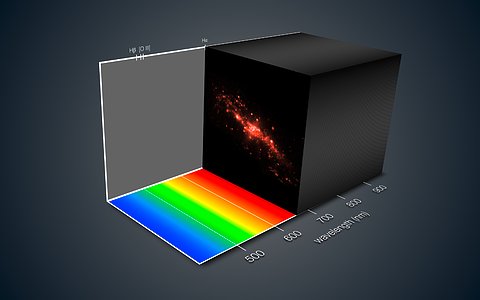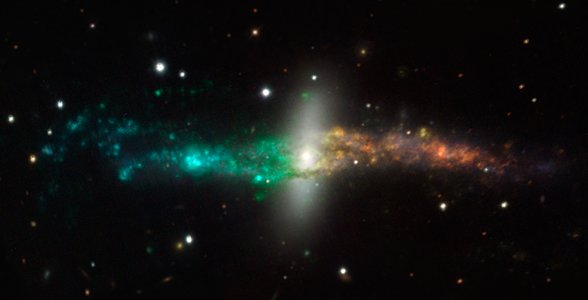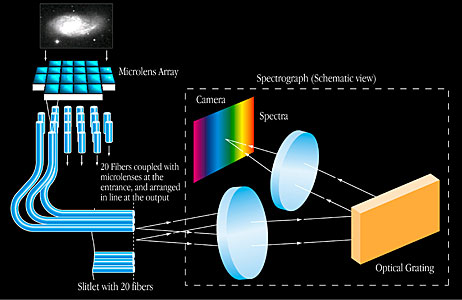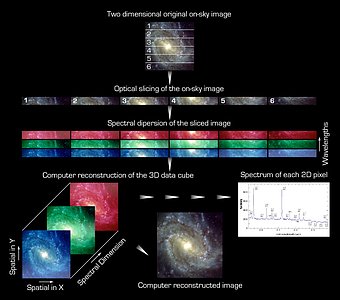Integral Field Units
How to obtain a 3D view of a whole galaxy in one shot
Think of a fly. Have you ever tried to catch one? You’d better be fast, because, like most insects, flies can detect movements 360° around them. The secret lies in their compound eyes, which are made up of a large number of tiny photoreceptors (called ommatidia). These work together to give one, very wide mosaic view. Ants can have anything from a few ommatidia to a thousand, flies and bees have a few thousand, while butterflies and dragonflies have a few tens of thousands. The larger the number of ommatidia, the wider the insect’s field of view, and the sharper its vision.
Using a similar principle, but with a completely different purpose, scientists have developed an instrument called the integral field unit (IFU). In an IFU the field of view is divided into many cells or segments to obtain a comprehensive overview of the whole. IFUs are widely used in Earth remote sensing, and more specifically in weather forecasting, and in the monitoring of natural disasters and climate change.

IFUs are used in astronomy to study extended objects, such as nebulae, galaxies or a crowded cluster of stars or galaxies in one shot, using a technique known as integral field spectroscopy. In this method, the signal from each cell or pixel of the field is fed into a spectrograph, which then generates a spectrum for each individual pixel. All the resulting spectra are arranged into a datacube (see Figure 1) which contains the entire 2D field of view plus the third dimension drawn from the spectrograph, which splits the light into its different colours or wavelengths (see Figure 2). Astronomers can use the wealth of information from integral field spectrographs to measure, for example, the motion of the gas in a distant galaxy (see eso1437) or the distances to the different galaxies found in a field of view (see eso1507).
Different types of IFUs use different techniques to divide the field of view. The three main ones applied in astronomy are:
- A microlens array (very similar to the insects’ composite eyes).
- A fibre bundle, which can be used alone or in combination with the microlens array (see Figure 3).
- An image slicer (see Figure 4).
The first idea for an IFU came from G. Courtes in 1982. It had its first practical application in astronomy with the instrument TIGER, which saw its first light in 1987 on the 3.6-metre Canada-France-Hawaii Telescope (CFHT) on Mauna Kea, Hawaii. TIGERS’s IFU is a lenslet array.
At ESO, the first dedicated integral field spectrograph was SINFONI, which saw its first light at the Very Large Telescope (VLT) in 2004. SINFONI works with an image slicer, on the same principle as the more recent MUSE instrument, which has a giant IFU. The multi-object spectrograph FLAMES also has two integral field units, while the second generation infrared spectrograph KMOS has 24 small IFUs, each installed in a deployable arm. VIMOS also has a fairly wide IFU, which combines microlenses and a fibre bundle. All these instruments have different characteristics — they are sensitive to different wavelengths, they have different fields of view, and different spectral resolutions — which make them suitable for observing different types of objects and solve different astronomical questions.
Integral field spectrographs are becoming more and more sophisticated, with bigger detectors able to provide a sharper and deeper 3D understanding of the cosmos. Inkeeping with the insect analogy, IFUs are evolving from ants into dragonflies.



